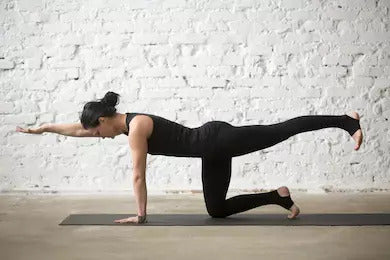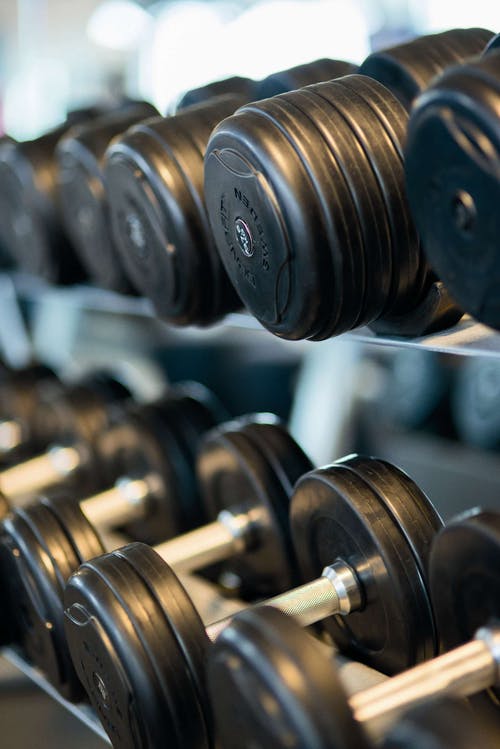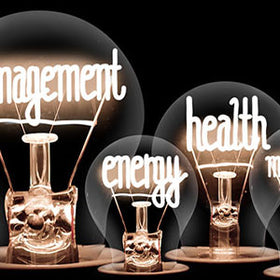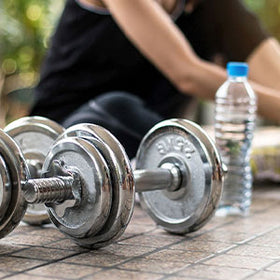Get Moving & Find Relief
A frequent question among most people, especially as they get older, is how can I relieve my back pain? The truth is that there are some thing that can help, but it depends on where the pain is located and what’s causing it. There are different exercises and poses you can perform to help alleviate your back pain, and best of all, they are work wonderfully when paired with a soothing massage afterward.
According to the National Institute of Neurological Disorders and Stroke, the lower back is the most common area affected by back pain. About 80% of adults have to deal with low back pain at some point during their life. Between long hours on your feet, sitting at a desk all day, and every day you’re bound to experience some back pain from time to time.
There are many reasons for chronic back pain and luckily there are several different moves that you can do to help relieve your back pain. Plus, it can help to improve your flexibility.
In fact, researchers in Australia and Brazil collected 23 studies from around the world that involved nearly 31,000 back-pain sufferers. When they looked at the variety of pain-prevention strategies, they found that those who exercised two or three times a week a decrease in back pain episodes of 35%. When paired with preventative techniques like proper lifting, better ergonomics, and improved posture, the accompanying exercise cut risk by 45%.
Seth Kress, a physical therapist and resource clinician for outpatient physical therapy at Loyola University Medical Center in Maywood, IL says that, "Physical activity warms up muscles and increases blood flow [...], which can encourage healing and relieve pain. It also strengthens the muscles supporting the spine."
So what's the best type of exercise for back pain? According to the study, all forms of physical activity from back-strengthening moves to general cardio like walking proved to be effective. One thing to be aware of however is to always ease into exercise and take it slow. While some mild discomfort can be normal, you need to stop if you experience any severe pain. You really shouldn’t feel any worse after exercising.
Starting Off
The safest movement when you’re first getting started is walking. As you build endurance and strength, then look to strengthening and balancing moves. To keep you from straining a muscle in your back make sure to do some exercises that help to increase the range of motion in your spine. So what exactly are those moves? Well, some are included here in this article to help you find some relief.
Most of the poses we’ll talk about below are a part of a yoga routine. Yoga is well-known for its stretching and back pain relief and best of all the positions below can be very effective and are typically safe for most everyone, including those who are pregnant who often have to deal with back pain. Try each one slowly and don’t push it. This is supposed to relieve pain not make it worse.
Cobra Pose

When you want to try cobra, which can stretch your stomach and provide some back pain relief, you’ll start by lying face-down on the floor. Stretch your legs and feet out behind you with the tops of your feet resting on the floor. Bring your hands in line with your ribcage so that they are under your shoulders. Keep your elbows close to your body. Then, you slowly straighten your arms as you raise your upper body up off the floor, arching your back gently to look up. You can hold the stretch for as long as you need and can even look over either shoulder to stretch your side as well. You also don't have to bend as far as pictured.
Child’s Pose

Child’s pose is another stretch that can help with back pain, specifically lower back pain. This pose stretches several muscles in your back and can even stretch your ankles as your feet are pressed against the floor. To do child’s pose, start by kneeling on the floor sitting on your heels. If that’s too much for your legs, you can assume the tabletop position, aka getting down on your hands and knees. Next, you will open your knees about as wide as your hips or a little wider if you need more room for your stomach or hips. Slowly bend at your hips so that your head reaches toward the floor. Your chest should be resting on or between your thighs. Lastly, stretch out your arms out in front of you, resting your palms on the floor. Hold this pose for up to a minute.
Stretching is also important for the upper back. Several people carry stress in their shoulders and neck. You might be sitting at your desk or using your laptop all day and wind up with your shoulders hunched up. I know I do! Thankfully there are ways to stretch out those muscles and relieve stress too.
Cat-Cow Pose

To do cat-cow, which is actually a combination of two poses, start on your hands and knees with your hands directly below your shoulders and your knees directly below your hips. Keep your knees about hip-width apart as well. To begin the sequence, take a break in and allow your head to raise up toward the ceiling and your belly to drop toward the floor, pushing away from the floor with your hands and knees. As you breathe out, round your body into an arch, like a cat. As you exhale, squeeze your belly in tight. Move through a few breaths likes this. You can repeat this sequence as often as you like.
Arm Reaches
Another great stretch for your upper back is arm reaches. Start on your hands and knees. Then slowly lift one hand and stretch your arm out in front of you. Your hand, arm, and neck should be parallel to the floor. In other words, don’t raise your head. Hold this pose for 5 seconds and then lower your hand back to the floor, repeating with the other arm. You can do this five to 10 times on each side. You can do these stretches every day even if you’re not having upper or lower back pain. Keeping your joints flexible can help ease your pain today and prevent pain tomorrow.
Bird Dog

To kick arm reach up a notch, try the Bird Dog. Start on all fours with your back flat also called tabletop position. Then, engage your abdominals by gently pulling them up toward your spine. Slide your left leg out behind you with your toes pointing down. When you’re ready, engage your core and leg muscles to lift up your leg. Make sure you keep your hips level by continuing to point your toes down.
Lastly, put your right arm ahead of you and lift it up, making sure that you keep breathing steadily through the move. Return to the starting position and repeat with the opposite arm and leg. That's 1 repetition. This one can be more challenging, so don’t feel like you have to push it too hard. It does challenge your balance and a bit rough on your knees. If you need to cushion your knees more, you can double up your yoga mat under your knee when you’re doing each side or you can put a thin blanket down.
Extension-in-Standing

Stand with your feet slightly wider than hips’ distance apart with your knees slightly bent. Rest your hands on your lower back, like you’d do if you were about to slide them into your back pockets. Gently arch your lower back, neck, and head backward, looking up at the ceiling. Your hips should go forward slightly. Pause and return to the starting position. That's 1 repetition. It may not seem like a very intense exercise, but it can really help with tightness in the back and provide a gentle stretch when you’re in pain. Also, if you start to feel uncomfortable or dizzy when looking up, change your head position to look ahead instead. You also don't need to bend as far as pictured.
Abdominal Bracing
Lie on your back on a firm surface with your knees bent and your feet flat on the floor. Squeeze your abdominal muscles toward your spine and flatten your back as best you can. Imagine that you're sinking your belly button into the floor. Hold for 5 seconds, then relax your stomach muscles. That's 1 repetition. Eventually, try doing the move with your legs flat on the floor. Again, this is a small movement that can really help build core strength, which can truly help to support your back.
Bridge Pose

Lie on your back with your knees bent, feet flat on the floor. Tighten your abdominals, push down with your legs, and scoop with your pelvis so that you can lift your butt. Hold for a breath and then lower back down to the floor. As you’re lifting, make sure to keep your back, hips, and legs in a straight line. And to help your upper back and prevent pinching in your neck, look up with your chin going up toward the ceiling. That's 1 repetition. Do as many of these, as slowly and controlled as you can, for as long as you can. As always, don’t push yourself too hard and only lift up as far as you can at that moment.
Knees-to-Chest

Here's another way to get your legs pumping as a remedy for lower back pain. Start by lying on your back, putting your feet flat on the floor with your knees bent. You can also straighten your legs flat on the floor if you’re looking for a bit more from this stretch. Draw your right knee up to your chest, keeping your left foot, or leg, flat on the floor.
Wrap your hand or arms around your knee and pull it in gently. Hold this for 15-30 seconds. While doing this be sure to keep your lower back flat on the floor. Repeat on the left side and go back and forth, performing the knee-to-chest position two to four times. This position can actually be very good for digestion as well.
Pelvic Tilts
Before back pain has you bent over unable to stand straight, try lying on your back for some pelvic tilts. Pelvic tilts can strengthen the area, which often works in concert with the core muscles along your spine to help provide the support your back needs. Essentially, when your core and pelvis are strong, your back muscles don’t have to work as hard.
To begin pelvic tilts, lie with your back and upper body on the floor and your knees bent. Keep your feet flat on the floor. Gently squeeze your stomach in toward your spine. Think of it like getting your belly button close to your backbone by squeezing it in. This helps keep your abdominals tight. With your stomach firm, rock your hips forward, rolling your butt across the floor. Then on an exhale, roll your hips back, gently curving into yourself so that your spine pressed into the floor. Repeat your pelvic tilts eight to 12 times in time with your breath.
Carefully Choose a Weight Lifting Regimen

If properly done, weight lifting can help some of your back pain to melt away as it starts to strengthen your lower back and supporting areas, like your core and shoulders.
However, if you’re dealing with acute pain, which is pain that comes on suddenly, the additional stress of weight training could potentially cause an injury. You’ll want to talk to your doctor first to ensure that a bit of weight training is right for you and which activities will work best for your situation.
Aerobic Exercises
Aerobic workouts, frequently called cardio by workout enthusiasts, help strengthen the whole cardiovascular system, from your lungs and heart down to your blood vessels themselves. Biking, swimming, walking, and many other exercises that elevate your heart rate are considered cardio. Because of the overall strengthening and endurance benefits of aerobic workouts they can also be beneficial for back pain.
When you’re starting out, take it slow and only go for as long as you can without becoming downright exhausted. Additionally, since back pain frequently requires special care, try swimming or water exercises as you begin. When you’re in the pool the water supports your body weight, giving your back a break. But be careful about twisting your back if that aggravates your symptoms.
Some Pilates

Many Pilates exercises can be performed without that fancy equipment you always see and can be very beneficial for back pain. Strengthening and stretching routines with a focus on your core will be best for those who suffer from back pain symptoms. With help from an experienced instructor, Pilates can help several people with low back pain. Make sure your instructor knows about your pain ahead of time so that you don’t perform any moves that you shouldn’t. You can also look at some Pilates videos and test them out. Just remember that if anything starts to hurt, back off or stop entirely.
In Conclusion
If you’re seeking an at-home way to relieve or lessen your back pain, these moves can help.
Of course, prior to starting any new form of treatment, it’s very important to talk to your doctor. If you have chronic pain, numbness, or tingling, you always consult a physician. A doctor can determine the cause of your pain and prescribe the right treatment therapies.
If you and your doctor agree that these moves can be helpful when paired with your treatment plan, you can start practicing them today. Your back will thank you.
Additionally, remember how well massage pairs with all these stretches and conventional therapies to aid with back pain. It is a wonderful way to improve circulation, release tension, and help your back muscles to heal.
To learn more about chronic back pain and massage, click here.
Finished With Your Research?
You can look into the chairs, techniques, and other benefits of massage in the Learning Center on our website, and you’ll be able to see the physical benefits each of the styles offered and what to be prepared for from them.
If you have any questions or are interested in purchasing your first massage chair, check out our Massage Chair Buying Guide or give us a call. You can even reach out through email at info@massagechairplanet.com.
With all this in mind, don’t forget about our financing options. We understand that investing in a massage chair is a big decision, and we want to help make that process as simple and stress-free as possible. Our sales representatives are ready and excited to get you into the perfect chair!




